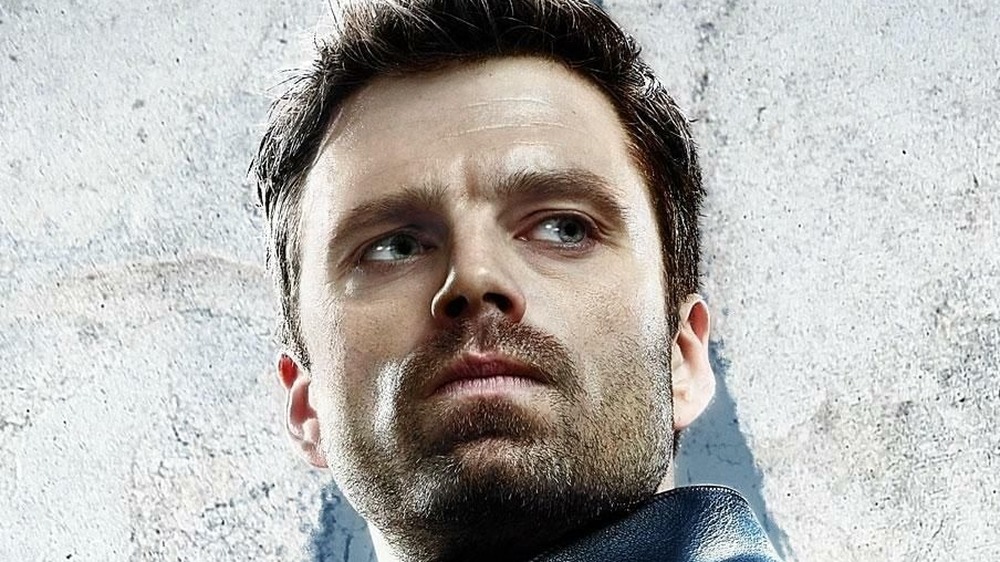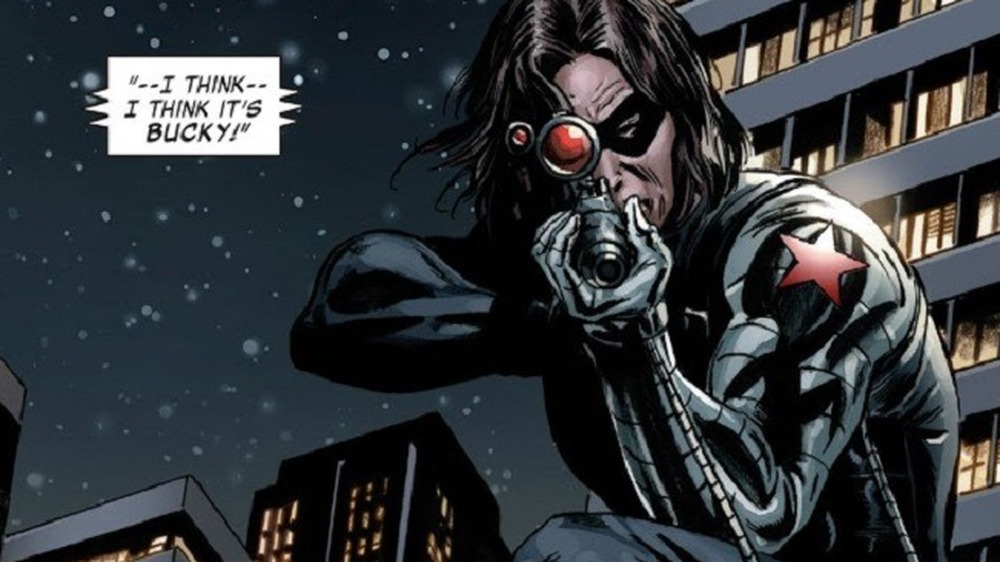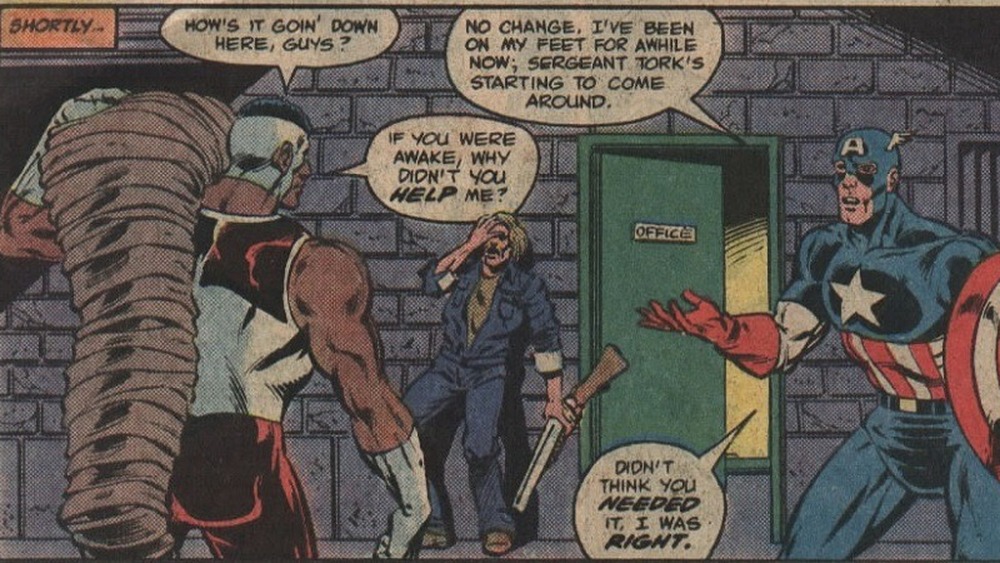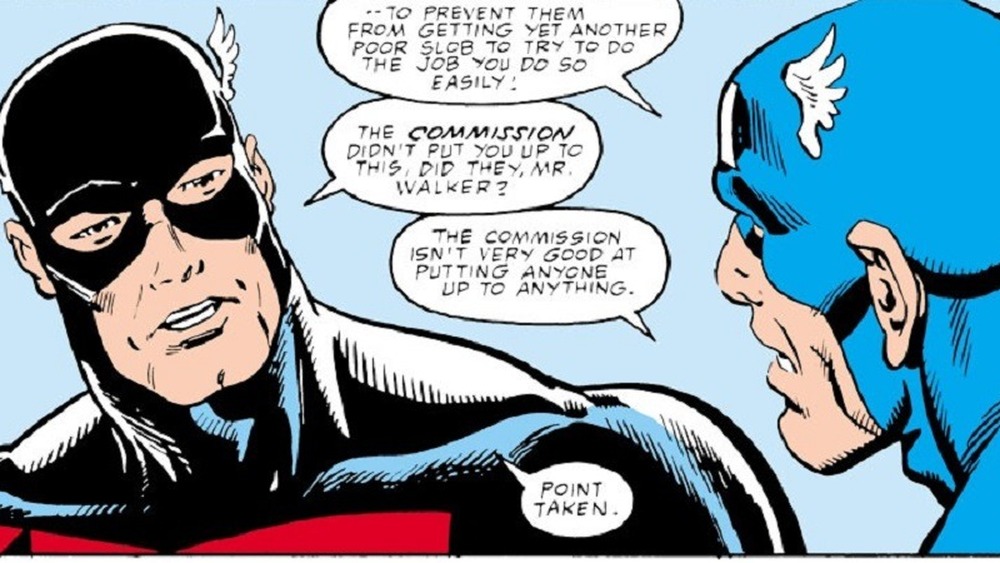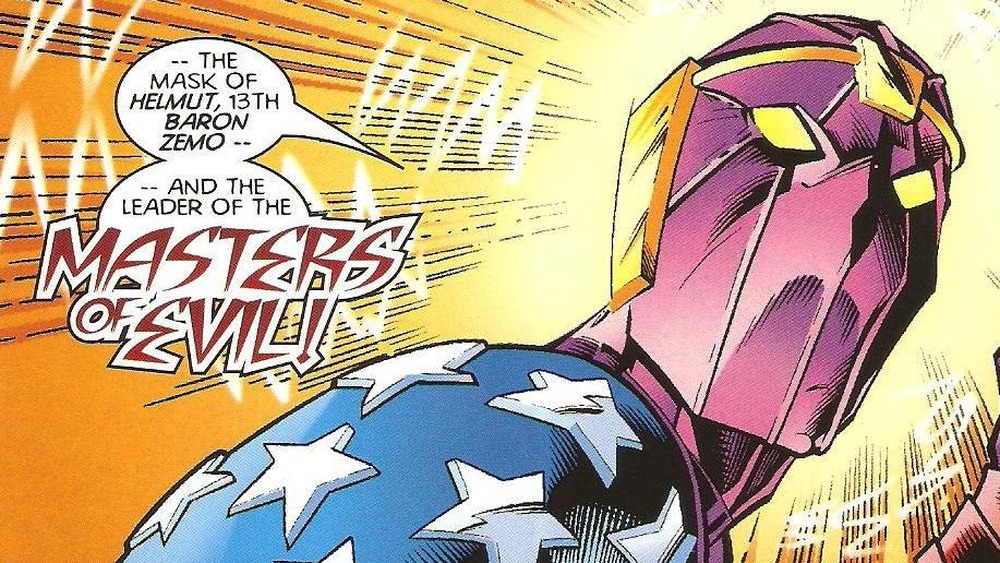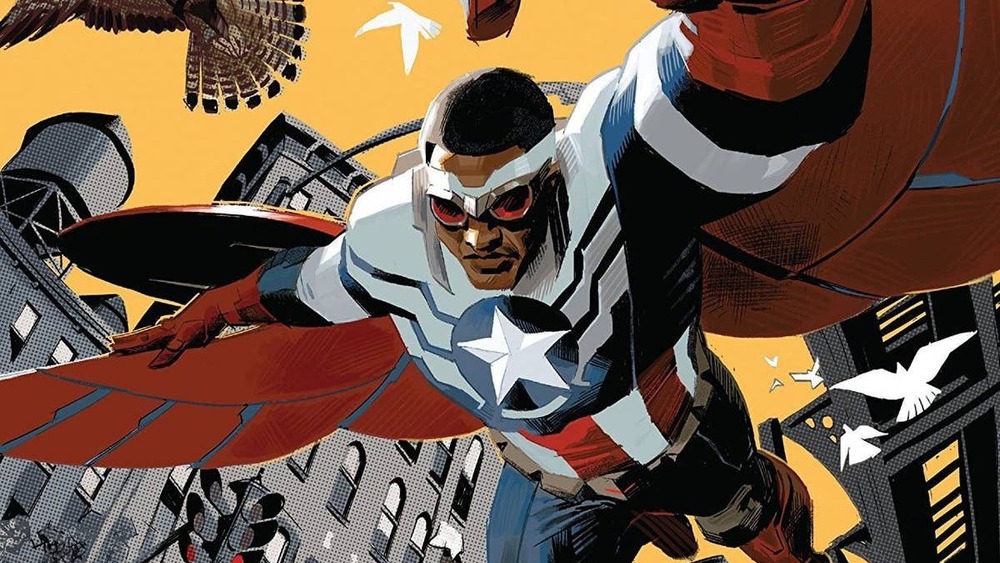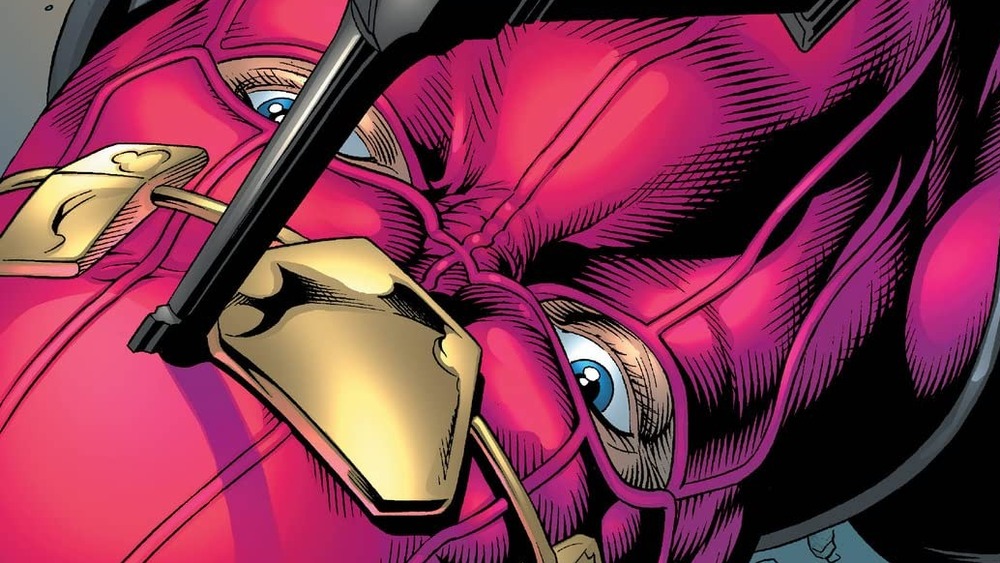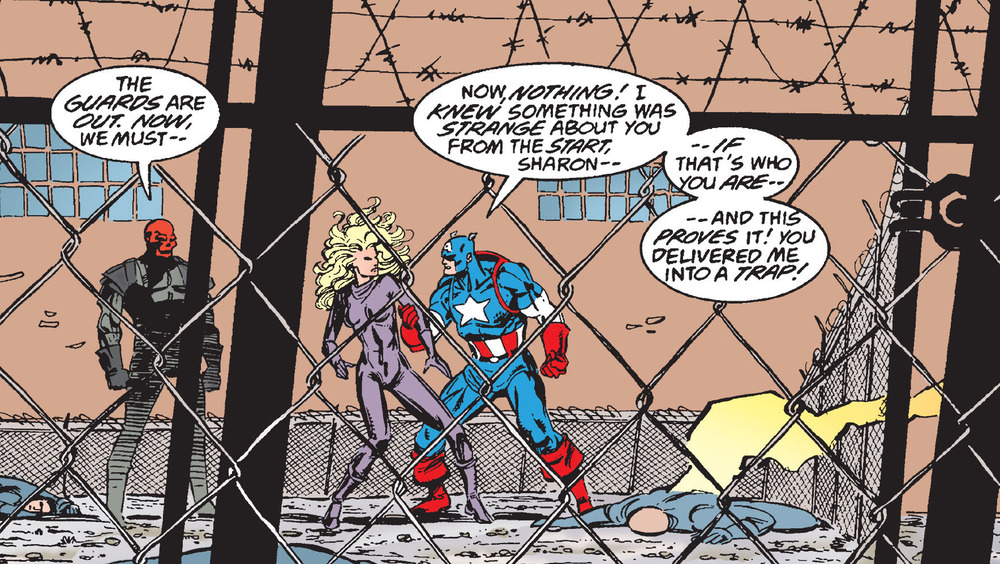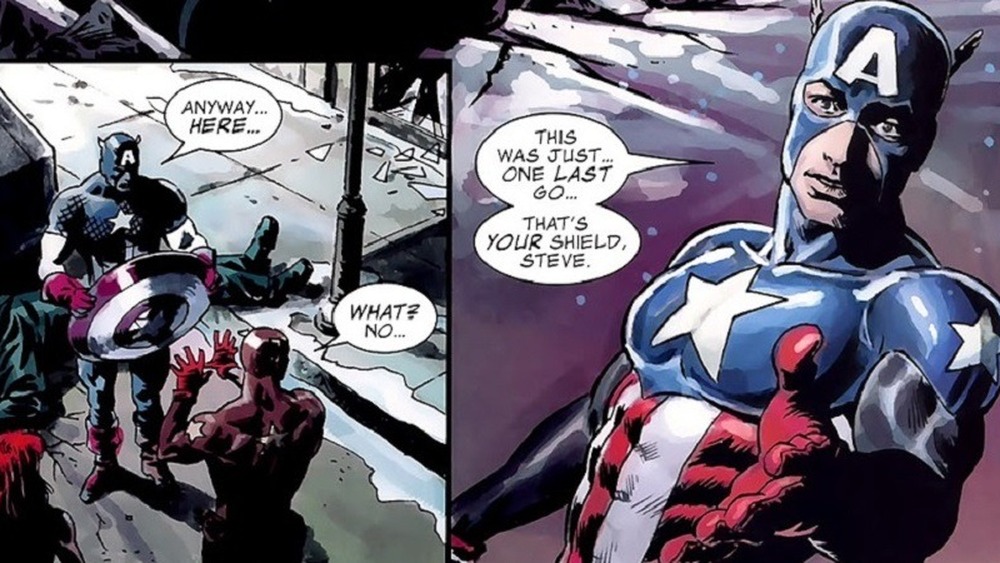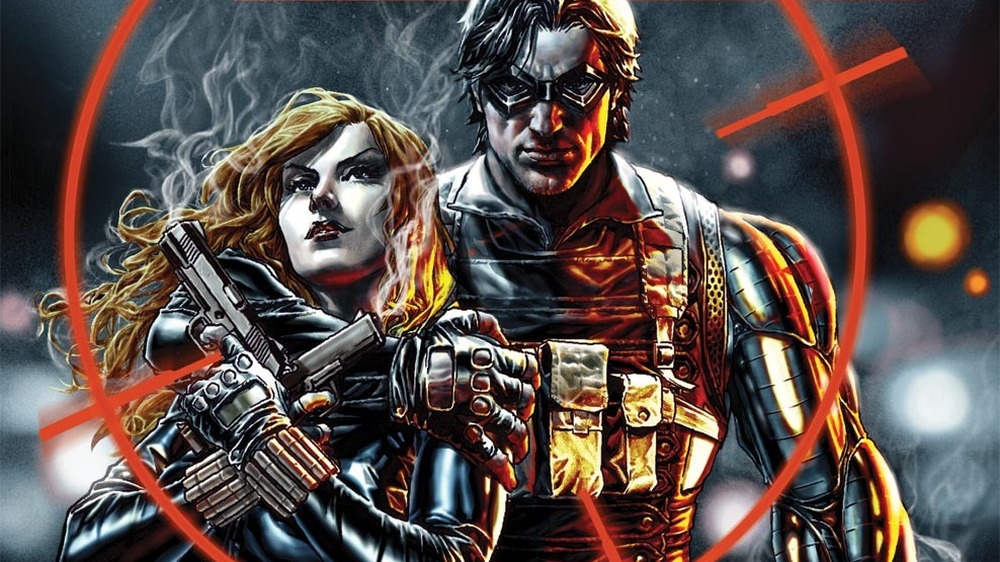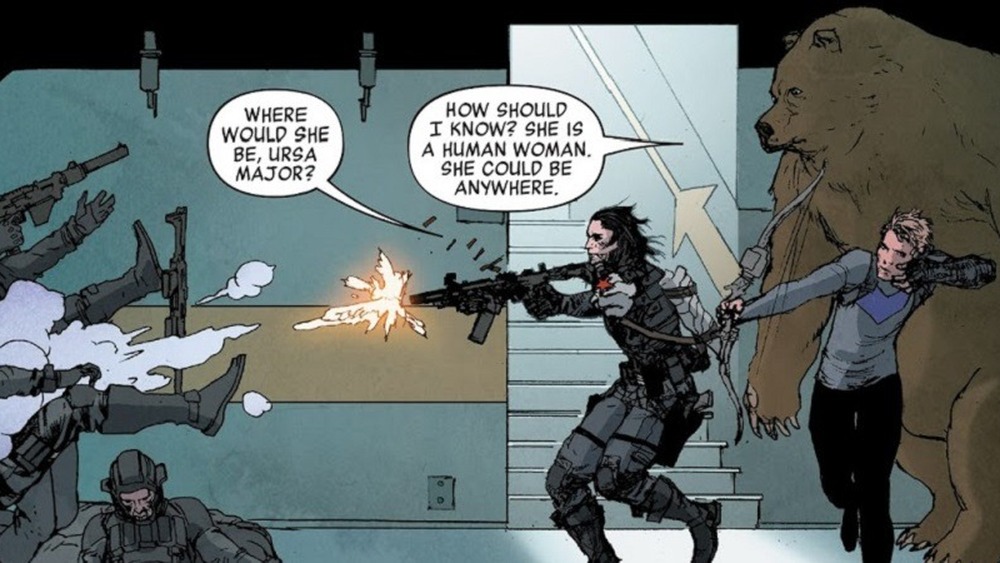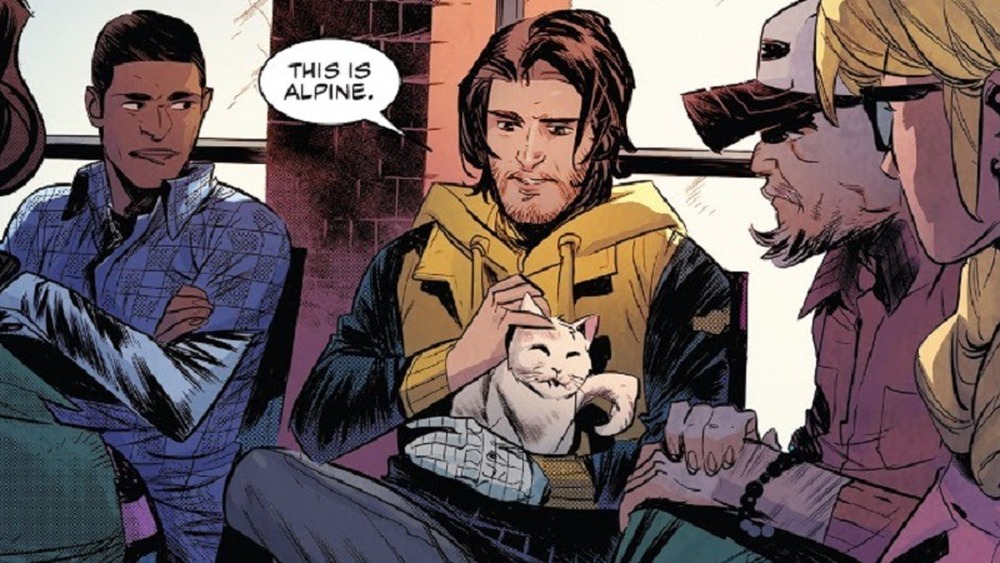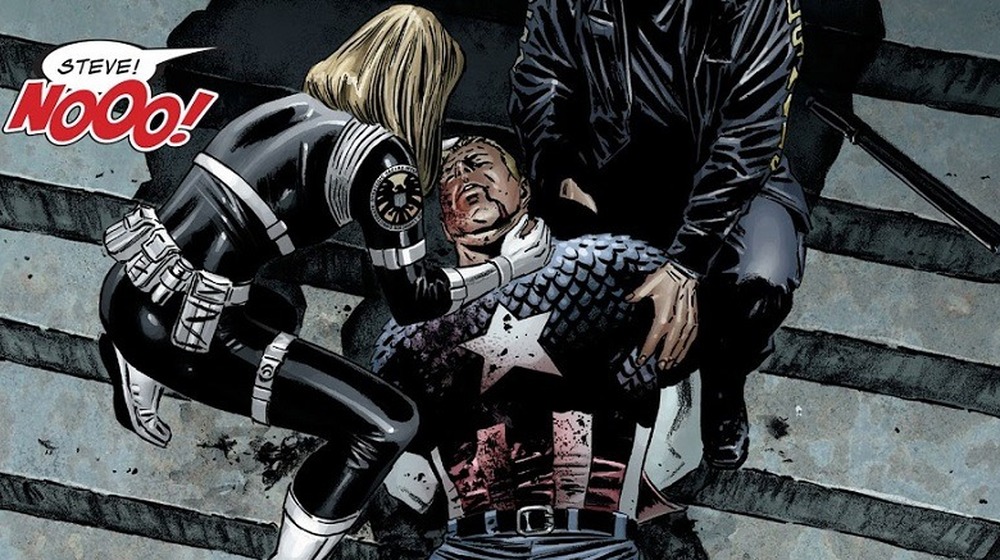Comics To Read If You Love The Falcon And The Winter Soldier
The Falcon And The Winter Soldier sees its titular leads confront their pasts as they try to determine their futures. Both Sam Wilson and Bucky Barnes are connected to Captain America, and, crucially, both of them are struggling to define themselves in his absence. Their ties to the man in red, white, and blue are even deeper in the comics: Sam and Bucky have both spent time as Steve Rogers' fighting partner, as solo heroes, and as inheritors of the shield.
They aren't the only characters from the show with fascinating comics exploits to their name, either. S.H.I.E.L.D. agent Sharon Carter is one of Cap's first love interests, and she boasts a wealth of adventures all her own. The MCU's Baron Zemo is significantly different from his comics incarnation, but his pen-and-ink exploits are legendary. John Walker and Lemar Hoskins' spur about as much controversy in the comics as they do on the show when they take on Cap and Bucky's mantles.
Indeed, there's a wide world of comics out there for the curious Falcon and the Winter Soldier fan to explore — and we're here to take a look at the most memorable stories of all. Some of these comics have been directly adapted to the MCU, while others tell radically different stories. All of them, however, provide a deeper understanding of the characters and the Marvel universe — and perhaps provide a preview of stories yet to come.
Captain America: The Winter Soldier (2004)
For over 40 years, one of the unwritten rules of Marvel Comics was that Bucky Barnes should stay dead. Then, in 2004, writer Ed Brubaker and artist Steve Epting broke that rule. The fifth volume of Captain America begins with the Red Skull offering to buy a man in a cryogenic tube from an ex-KGB agent and businessman named Aleksander Lukin, though Lukin refuses. It turns out that he has the legendary Winter Soldier on his hands, a Cold War assassin who is only brought out of his sleep to kill major targets.
The Winter Soldier is, of course, Bucky, who was captured by the Soviets after being thrown from a doomed plane. He's lost an arm, but they've replaced it with a cybernetic model that gets upgraded every few years. Most importantly, Bucky has been brainwashed into obeying his masters and is totally cut off from his old life. When Cap realizes that his old friend is alive but doesn't remember his past, he fights him doggedly while trying to get him to acknowledge his true self. Finally, Cap uses the Cosmic Cube to restore Bucky's memories, making Bucky a hero once again — albeit one who has to contend with a difficult past. This spectacular run is essential reading for anyone even remotely interested in Bucky's long, strange, death-defying story.
The Falcon (1983)
The Falcon's first solo series came in 1983, and was the first collaboration between all-star superhero scribe Christopher Priest and artist Mark Bright. This series highlights the various worlds Sam Wilson is part of, and how they come together — or don't. As a social worker, he sees potential in a young man named Miguel after he stops him from mugging someone on the street. As an influential and respected street level-superhero, he tries to broker a peace treaty between a powerful street gang called the Legion and the police. As a superhero, he has to deal with the likes of Nemesis, a Sentinel (!), and Electro.
Heavy stuff — but that's not all this series juggles. The Falcon also introduces shotgun-wielding Sgt. Tork, a hard-boiled and hilarious cop who later returns in Priest's celebrated Black Panther run, and asks what has become a long-running question: Does Sam's link to Redwing (who is an actual bird in the comics) make him a mutant? Said link allows the broken-down Sentinel to get involved in the story — it senses Sam coming by and thinks he's a mutant. This was later retconned as the Sentinel being faulty, but hey, canon is never settled forever.
All in all, this is a thrilling and thoughtful series that serves as a great introduction to Sam's saga in the comics and the work of one of modern comics' most celebrated writers.
Captain America: The Captain (1987)
Captain America has fought many villains whose ideologies challenge his. Consider John Walker, who begins as the Super-Patriot, boasting enhanced strength and a jingoistic view of America. When Cap is told to either work directly for the government or resign, he chooses to give up the shield and uniform. John Walker is chosen to be his replacement, and quickly realizes he has a lot to learn. This saga, written by Mark Gruenwald and drawn by Tom Morgan and Kieron Dwyer, among others, unfolded over the course of the late '80s, and is collected in Captain America: The Captain.
This particular story arc, as you might have guessed, is a major inspiration for The Falcon and the Winter Soldier. John Walker's time as Cap sees him take on groups all over the ideological map, confront his inner darkness, and lose people he loves. In the meantime, Steve Rogers puts on a new uniform, starts calling himself the Captain, and gets Tony Stark to make him a new shield. Thus transformed, he follows a criminal enterprise that includes a mutant group known as the Resistants, the Scourge of the Underworld, the terrorist group U.L.T.I.M.A.T.U.M., and other seemingly unrelated groups. The final battle between Rogers and Walker is an intense one, full of emotion, surprise, and history — and, crucially, a villain who's given them both enough grief for a lifetime.
Thunderbolts Classic (1997)
In his never-ending quest to kill Captain America and conquer the world, Baron Helmut Zemo has concocted many great schemes. When the Avengers, the Fantastic Four, and a number of other heroes seemingly die at the hands of Onslaught, Zemo unveils his most devious plan yet: He forms a new team of "heroes" who are actually former members of the Masters of Evil. He calls them the Thunderbolts, and his goal is to get the public and the government to trust them, so that they can get access to the Avengers' old files.
This all goes down in the 1997 Thunderbolts series, collected as Thunderbolts Classic. What Zemo doesn't expect is for some of his Thunderbolts to take a liking to the superhero life, and eventually betray him. Villains like the former Beetle and Screaming Mimi (also known as MACH-1 and Songbird) aren't completely evil — they're just losers who made bad choices. Heck, even classic psychopath Moonstone/Meteorite enjoys her new role, especially since she's still able to scheme and manipulate to her heart's content.
Zemo rallies, and ultimately reveals an even larger-scale plan for world domination. What goes down is exciting, unexpected, and entertaining as all get out. Hopefully, the MCU plans to include this sort of grand, planet-spanning evil for its version of Zemo.
All-New Captain America (2014)
When Steve Rogers has the Super-Soldier Serum drained out of him by the Iron Nail and rapidly ages, he passes on the mantle of Captain America to Sam Wilson. Thus begins the 2014 All-New Captain America series, written by Rick Remender and drawn by Stuart Immonen.
In this run, Sam fights alongside his girlfriend, S.H.I.E.L.D. agent Misty Knight, and his new partner, Nomad. This Nomad is Ian Rogers, son of Arnim Zola, who Steve Rogers raised as his own son during the years he spent in Dimension Z. Sam goes up against a sinister world-purging scheme courtesy of Baron Zemo in this arc: Having obtained the blood of a young Inhuman named Lucas, Zemo is planning to spread it through the many super-teams he has infiltrated across the globe.
This series is packed with thrills, as Sam is constantly underestimated by his enemies — a fact he proceeds to use to thwart plan after plan. Said plans come from the deadliest members of Steve Rogers' rogues gallery, including Crossbones, Batroc, Taskmaster, Zemo, and many others, giving Sam a baptism by fire as the new Captain America. The parallels in this storyline to The Falcon and the Winter Soldier show are obvious, making it well worth any fan's time.
Zemo: Born Better (2007)
The 2007 miniseries Thunderbolts Presents: Zemo: Born Better explores the entire lineage of the Zemo line, from Harbin Zemo earning a barony in the 15th century to our modern Helmut Zemo being lost in time and meeting his ancestors. Written by Fabian Nicieza and drawn by Tom Grummett, this arc follows a supposedly reformed Zemo, who wants to save humanity from itself instead of conquering the world. After seemingly being disintegrated after saving the Thunderbolts from an out-of-control Moonstone, Zemo is zapped out of existence after having his face scarred yet again. A graduate student named Wendell Volker postulates that Zemo isn't dead, but is instead time traveling, somehow. He is, of course, correct.
This series offers a fascinating glimpse into the history of the Zemo family — especially its arrogance and hubris. Meanwhile, the actions of an increasingly deranged Volker, who is killing distant relatives of Zemo left and right in an effort to bring him back, leads to a shocking revelation. This series perfectly encapsulates Zemo's personality and beliefs: He sees himself as a leader, not a ruler. And a good leader, according to Zemo, gets the people to believe what he wants them to believe, because he's better than they are.
Captain America: Man Without a Country (1995)
After Mark Gruenwald finished his long run on Captain America in 1995, writer Mark Waid and artist Ron Garney took over with an explosive new storyline. Collected in Captain America: Man Without A Country, this arc follows up on Cap seemingly dying after the Super-Soldier Serum runs its course in his body and causes his heart to fail. However, just before he dies, his body is whisked away and he's given a transfusion of blood by the one man who has the same serum running through his veins: The Red Skull. The Skull, who is in a clone of Cap's body, saves him because he needs his help getting the Cosmic Cube away from a gang of crazy cultists.
The real shocker? The Skull's main ally in all of this is Sharon Carter, who had been dead for nearly 20 years, in terms of publishing history. Her death, it's explained (and retconned), had been faked for a dangerous assignment overseas, but all of her contacts to S.H.I.E.L.D. were cut off and she was trapped in enemy territory. She's helping the Skull because she infiltrated the Kubekult and has seen how dangerous they are. She knows the Skull will betray them, but also knows Cap is the one man who can prevent that, too. This storyline reintroduces Sharon as an embittered but tough-as-nails agent, setting the stage for many years' worth of pulse-pounding stories.
Captain America: Who Will Wield the Shield? (2009)
The 2009 one-shot Captain America: Who Will Wield The Shield? is the capstone of the "Death Of Captain America" storyline. It's worth seeking out on its own, if only for the series of quiet, meditative moments between Bucky Barnes and Steve Rogers it contains. Rogers, believed to be dead at he hands of Sharon Carter, actually had his consciousness severed from his body and was forced to relive his entire life (highs and lows) on a loop. This is all thanks to the Red Skull, of course. Thankfully, Bucky and Sharon are eventually able to stop the Skull and restore Steve Rogers.
This comic explores both Bucky and Steve's mindsets to poignant effect. Bucky is prepared to give up being Captain America, even though he loves it, because he spent years working with Steve Rogers and knows that no one will ever be better at the job. At the same time, Steve isn't sure if he wants the job back at all, after everything he's been through. After watching Bucky and his then-girlfriend and fellow Avenger Black Widow take out Mr. Hyde, Steve makes up his mind. He gives Bucky the shield, and asks him to continue being Captain America — partly because he's good at it, but also because he's seen flashes of the future and knows that Bucky needs to be Cap, lest he suffer dire consequences.
Winter Soldier: The Longest Winter (2012)
After the "Death of Captain America" arc concludes with Steve Rogers' resurrection, he insists that Bucky Barnes remain as his replacement. However, Bucky eventually stands trial for the crimes he committed as the Winter Soldier. He is found not guilty, but is taken by Russian officials for supposedly killing two civilians. It's all a ruse, tied to his days in the Russian spy factory known as the Red Room. However, this is enough controversy to force him to give up being Captain America and reclaim his identity as the Winter Soldier.
Thus begins Bucky's 2012 solo series, Winter Soldier, in which writer Ed Brubaker and artist Jackson Guice explore the world of lies and deception with aplomb. In the inaugural arc, "Longest Winter," Bucky and Black Widow continue their romance, which is revealed as having started decades earlier, when both were Red Room agents. Bucky is confronted by sleeper agents he trained years ago, trying to assassinate Dr. Doom. He and Widow defeat the agents, but a third sleeper agent not only kills a substitute Bucky from the 1940s, he also kidnaps Widow. The plot gets stranger and deeper from there, with surprise appearances from old Soviet super-villains and figures from Latveria.
Tales Of Suspense 100-104 (2018)
After nearly 50 years, Marvel returned to the Tales Of Suspense title in 2018, to tell a five-part story starring Hawkeye and the Winter Soldier. After Black Widow's apparent death in the "Secret Empire" event, two of her ex-boyfriends, Clint Barton, AKA Hawkeye, and Bucky Barnes team up to follow a trail of dead spies. Hawkeye thinks Natasha is alive, but Bucky thinks she's dead. They proceed to encounter various clones of Yelena Belova, the second Black Widow, who keeps getting killed. When they finally find Natasha, she's not quite the woman they once knew.
This comic, written by Matthew Rosenberg and drawn by Travel Foreman, is a great blend of comedic chemistry between alpha-male blockheads Hawkeye and Bucky and swerve-heavy espionage. Much manipulation of both men and their reputations takes place, especially the blood-stained legend of the Winter Soldier. Intrigue, character growth, humor, and psychological complexity ensue. All this, and a talking bear, too!
Falcon & Winter Soldier (2020)
The 2020 Falcon & Winter Soldier miniseries, written by Derek Landy and drawn by Federico Vicentini, sees the titular duo's personal lives intersect with a larger web of espionage. Sam Wilson, ever the social worker, is worried about a young woman who's stopped coming to a veterans' support group he runs. Bucky Barnes is working for the government as a part-time assassin, as part of the conditional pardon he's received for helping take down HYDRA. When they come across a massacre at the agency Bucky works for, things start to get weird.
Bucky's handler, Veronica Eden, tells him that there's an internal struggle at HYDRA for leadership, now that Baron Zemo is dead. Sam and Bucky encounter a bright-eyed young killer named the Natural, who is the world's biggest Captain America fanboy. He's not the only colorful personality popping up: Zemo is present as well, and he manages to force our heroes into working with him. Fun twists and intriguing betrayals ensue, in addition to a whole lot of heart. Sam and Bucky's unlikely friendship is at its most affecting here — fans of the MCU versions of the characters will enjoy seeing their natural chemistry on full display.
The Death of Captain America (2007)
After the disastrous events of "Civil War," which pit Iron Man's pro-registration forces against Captain America's anti-registration forces, Cap decides to turn himself in and allow his case to go to trial. It never gets that far, as a mind-controlled Sharon Carter seemingly kills him. That's how 2007's epic Death Of Captain America arc starts (also called "The Death of the Dream"). Written by Ed Brubaker and drawn by Steve Epting, Jackson Guice, and others, it spotlights Sharon, Sam Wilson, Bucky Barnes, and many others as they all react to Cap's death.
Bucky's reaction is a particularly intense one: He sets out to kill the Red Skull and Tony Stark, whom he holds responsible for Steve's death. The Skull, whose consciousness is ensconced within the body of former KGB agent Aleksander Lukin, is the one who arranged Cap's apparent murder — his flunky, the mind-controlling psychiatrist Dr. Faustus, brainwashed Sharon into doing the deed herself. He attempts to brainwash Bucky as well, a process interrupted by Sam and Sharon's arrival. When Bucky proceeds to confront Stark, he surprises him by offering him the mantle of Captain America, as it's what Steve would have wanted. That twist is just one of many in this saga, as each character is forced to confront their inner demons. This is an absolutely essential read for fans of Bucky Barnes, Sam Wilson, and Sharon Carter.
